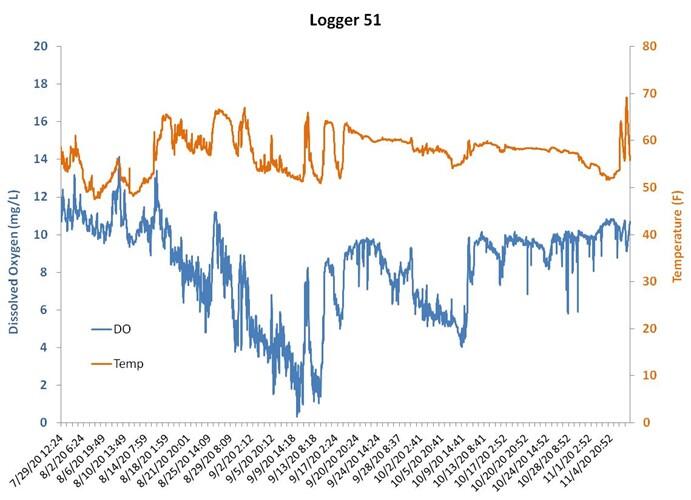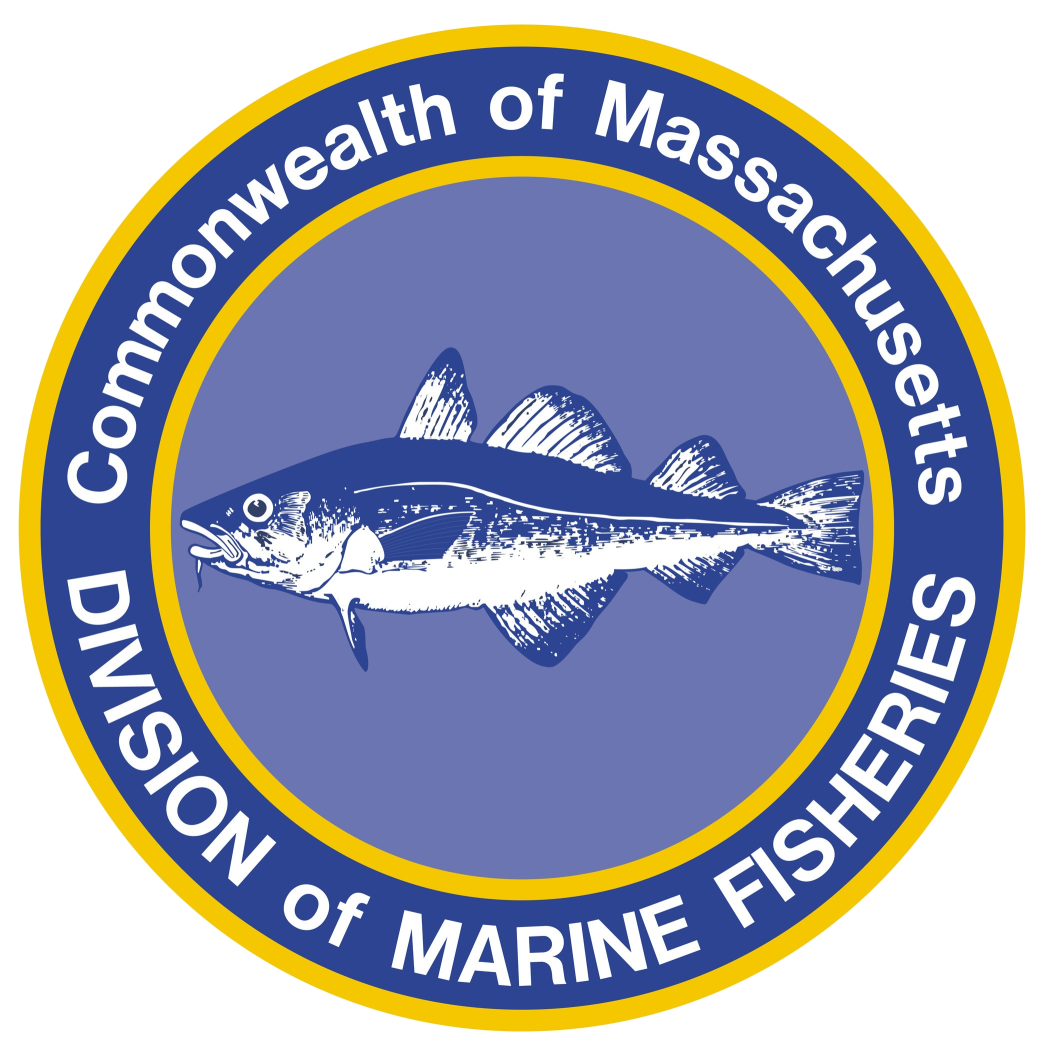- Division of Marine Fisheries

During September 2019, lobster fishers in the southern portion of Cape Cod Bay hauled up a nasty surprise—hundreds of pounds of dead lobsters, crabs, and finfish. DMF quickly learned that these deaths were caused by a severe hypoxia event; the bottom waters in the region did not have enough oxygen to sustain the life of those animals that couldn’t move away, like those stuck in the traps (See DMF News 2019 Q3/4 for more background). Determined to avoid this situation in the future, DMF and several fishermen from the affected area talked about developing a monitoring program so we could detect the formation of another hypoxic event, allowing fishermen to move their gear away from the affected area. This was the beginning of the Cape Cod Bay Study Fleet.
This past spring, the Lobster Foundation of Massachusetts was awarded funding from the MA Climate Change Resilience in Fisheries and Aquaculture Grant Program to support the Study Fleet’s goal of starting a monitoring program. The funding was used primarily to purchase Data Deck Hub Systems and data loggers developed by Lowell Instruments. These data loggers are attached to lobster traps and record dissolved oxygen (DO) and temperature every 15 minutes. When the traps are hauled, the data logger wirelessly communicates with the deck box. The data are rapidly downloaded, and a GPS location stamp is added to the file. The captain never has to touch the logger; everything is completely automated and happens so quickly that the normal pace of hauling, emptying, re-baiting, and setting back the traps is unaffected. The logger stays attached to the trap and goes back in the water when the gear is set back. The data stored on the deck box are downloaded to a land-based server using a cell phone signal. Five vessels participated in the Study Fleet, covering the southwestern portion of Cape Cod Bay (Manomet to Barnstable) and the northeastern corner (Provincetown area).
In addition to the Study Fleet, DMF has partnered with researchers from the Center for Coastal Studies (CCS) and Woods Hole Oceanographic Institution (WHOI) for their expertise in water quality and oceanographic conditions. This collaborative partnership is funded by the National Sea Grant American Lobster Initiative, and aims to provide data to describe fine-scale resolution of the oceanographic factors influencing bottom conditions in Cape Cod Bay, and allow researchers to better understand the processes that drive environmental changes impacting lobsters and other bottom-dwelling organisms.
CCS researchers regularly monitor water quality in Cape Cod Bay, using an instrument called a CTD (CTD stands for conductivity, temperature, and depth, which are three of the primary measurements the instrument collects) to collect information at various depths from the surface to the bottom at each sampling location (a water column profile). This September, they conducted additional surveys focused in the region where the Study Fleet loggers indicated DO was decreasing, which allowed us to monitor the changing conditions in three dimensions (east-west, north-south, and depth).
The monitoring technology deployed by the Study Fleet and our collaborators at CCS and WHOI allowed us to detect the formation of the “the Blob” this year. The Blob is what we’ve been calling the relatively cohesive hypoxic (insufficient oxygen) water mass that is formed near the ocean bottom in southern Cape Cod Bay. Starting in mid-August, DO declined throughout the southern portion of Cape Cod Bay, and hypoxic conditions were detected from the Sagamore area east to Barnstable in late August and throughout September. Hypoxic conditions were also detected by Study Fleet loggers for a short time in the Manomet area from late September to early October, but conditions here were less severe than farther south.
As a result of these monitoring efforts, we have learned that the Blob moves around in the southern portion of Cape Cod Bay, driven by wind and sea conditions. Strong northerly winds will push surface waters towards the shore, causing downwelling along the southern shoreline, which would push the Blob away from shore into deeper waters. Conversely, southerly winds blow surface waters away from shore, allowing for upwelling along the shoreline, which causes the Blob to move closer to shore. The only reports we received this year of dead lobsters were the result of the Blob being pushed into deeper waters in mid-September by a period of strong northerlies. A few days later the high seas from those same northerlies finally mixed the water column and replenished the DO on the bottom, breaking up the Blob for the season. Thankfully the Blob appears to have been less severe this year than last, and caused fewer lobster mortalities this year than it did in 2019.
Cape Cod Bay normally experiences a seasonal decline in the DO content of the bottom waters, taking place annually in the late summer and early fall. This is at least partially driven by upstream inputs of nutrients and resulting blooms of phytoplankton and plankton that then sink to the bottom to decay. The decomposition of organic materials depletes oxygen from bottom waters, and under stratified conditions oxygen cannot be replenished by mixing with the surface. The stratification of Cape Cod Bay is also a normal occurrence, isolating very warm surface waters from cooler, denser bottom waters. This stratification limits mixing and prevents the replenishment of oxygen to the bottom waters. The difference between normal and the formation of the Blob in 2019 and again in 2020 are what we are trying to understand with this new monitoring and research.
The collaboration between DMF, the Study Fleet, and researchers from CCS and WHOI has drastically improved our ability to detect the formation of hypoxic conditions and to track the movement of the Blob in southern Cape Cod Bay. We plan to continue this work in 2021, and in the meantime the partners from WHOI and CCS will be working to better understand what drives the development of the Blob, to increase our ability to detect and predict the potential onset of hypoxia in Cape Cod Bay. Here at DMF we will continue to develop ways to use the monitoring data to alert the commercial lobster fleet and other stakeholders of changing conditions in the Bay. This work represents an important collaboration between commercial fishers and scientists to ultimately benefit both the commercial fishing fleet and the resources on which they depend.
By Tracy Pugh, Ph.D., Invertebrate Fisheries Project Leader
